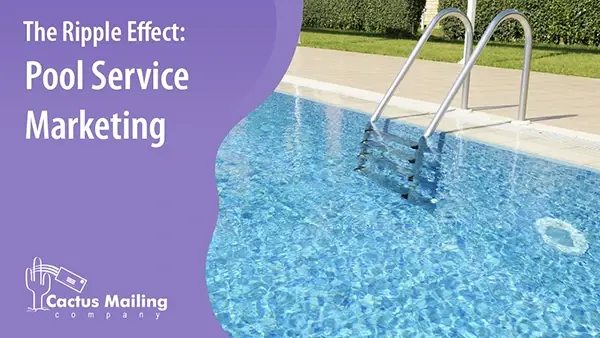We Are Here to Help!
Get pricing details and strategies that will work for your business.
In the current marketing atmosphere, how do you set your dental practice apart from the competition? If a more standard approach to advertising isn't bringing in the desired amount of new patients, you may want to consider some campaigns that emphasize your more specialized services. Dental implants are a specialized procedure that are not offered at all dental practices. If your practice has the surgical expertise, equipment, and experience required to provide dental implant services to clients, it's well worth advertising that information. In this article, we'll provide some tips as to how you can effectively market your implant services to potential clients and gain new long-term patients in the process.
Understanding Your Target Audience for Dental Implants
The demand for dental implants has been on a steady incline over the past several decades. Technological advancements in 3D imaging, computer-assisted design, and new implant materials have improved the availability and efficiency of these procedures. Public awareness has increased as a result of marketing by dental professionals and success stories from patients. Now more than ever, people are viewing dental implants as a durable and effective solution to missing teeth.
Despite rising demand, it can be difficult to narrow down a target audience for dental implants because the service applies to anyone with missing or damaged teeth. One of the more prominent demographics is adults aged 40+ because aging causes some individuals to experience tooth loss due to decay, gum disease, or injury. Some people also choose to undergo implant procedures for health or aesthetic reasons, but these tend to be individuals with more disposable income. Because of these two demographics, it is worth advertising your implant services to areas with middle-aged or older residents, as well as high-income areas.

Social Media Marketing for Dental Implants
Facebook and Instagram are the two best social media platforms for marketing dental implants. Many people have anxiety about undergoing surgical procedures, especially ones that will affect their personal appearance, making the image-driven nature of Instagram perfect for showcasing before-and-after photos of successful implants. As for Facebook, the user demographics tend to trend towards an older crowd, making it ideal for reaching a 40+ audience. Both of these platforms allow for high community engagement via comment interaction and live stream features.
Social media can help alleviate the anxiety of those who may be considering implants. Before-and-after photos showcase the real transformative power of your procedures, and posting client testimonials will further demonstrate why patients can be confident in your abilities. You can also build trust by posting educational content designed to help your followers better understand the procedure. Create videos and infographics about the implant process, benefits, recovery time, and comparisons to other options like dentures or bridges. If you have more information about your available services on your website, utilize social media to direct followers to these resources.
Content Marketing and SEO for Dental Implants
On your website, you'll want to post informative content with high-ranking keywords while addressing the needs and concerns of potential patients. This includes educational content and case studies that help demystify the process, similar to what we've recommended for your social media marketing. Consider using case studies that document the patient's journey from consultation to recovery in order to give your audience a comprehensive view of the entire process. Websites are also ideal for FAQ sections to address patient concerns such as costs, pain, and recovery time.
For SEO considerations, be sure to optimize for location-based searches such as "dental implants near me" or "dental implants in (city),” as patients are most likely to look for local practices to receive implant treatments from. Targeting long-tail keywords is also a viable SEO strategy as patients often search with specific and detailed questions such as "How much do dental implants cost in (city)?" Try to create some content that addresses these special concerns. Be sure to update your blog with posts on various topics related to dental implants like "Dental Implants vs. Dentures.” Frequently updating your website with fresh content signals to search engines that your site is active and relevant, making it more likely that you’ll receive priority in ranking over a less active site.

Google Advertising Marketing for Dental Implants
Google Ads can be an effective marketing tool for targeting potential clients who are actively looking for information about dental implant services. You can target the same keywords that you've created your optimized website content for, whether location-based or long-tail. You can also create targeted ad groups for specific categories like "dental implant cost" and "dental implant recovery" with ads tailored to each theme. You can also use display ads with the retargeting feature, allowing you to serve banner ads to users who have already visited your website to remind them about your services and keep your brand fresh in their minds.
Be sure to optimize your landing pages so that they are relevant to the copy of your search ads to avoid a high bounce rate. Many users get frustrated when they click an ad to learn information about dental implants, but instead land on a page about general dental services. It is also important to ensure that your landing pages are functional and optimized for mobile devices because it is common for people to make impulse searches on their smartphones. Consider implementing click-to-call features on your website to make it easier for users to contact your practice directly from their phones.
Direct Mail Marketing and Postcards for Dental Implants
Among traditional marketing channels, direct mail remains a highly effective option for dental practices of all kinds. Direct mail is a non-intrusive way of bringing attention to your business. Creating a direct mail postcard campaign maximizes your chances of having your brand and message seen by your audience because there will be no envelope to obscure it from view. The targeting options will also allow you to send your marketing materials to the right demographics within your community.
Tailor the design of your direct mail postcard to focus specifically on your implant services. Similar to your digital marketing, use before-and-after photos to show the aesthetic improvements created by your procedures. You can add a QR code for the recipient to scan and follow to a landing page on your website with additional information, your practice's phone number, or even a sign-up form for a consultation. The name of your practice should be highly visible on the card, as you'll want recipients to remember it when they require your services. Finally, be sure to include a clear call-to-action statement in your message directing the recipient what they should do next, whether that is visiting your website or social media account, or calling your practice directly.

Budgeting for Dental Implant Marketing Campaigns
Be sure to set a clear marketing budget before you begin your campaign so that you can allocate resources without overspending. Dental implants tend to be high-revenue services that generate good ROI, so you may want to consider allocating more marketing budget for them. If you divide your marketing budget across multiple channels, you can reach your audience on different platforms, increasing visibility and engagement. If you're inexperienced in marketing , consider running some experimental campaigns on different channels in order to identify those which have the highest ROI. Then, you can re-allocate your budget in order to prioritize the channels which are generating the most leads.
How to Measure the Success of a Dental Implant Marketing Campaign
The first step of planning any marketing campaign is to determine what your goals are. While increasing the number of dental implant patients at your practice is likely your overarching goal, it may be helpful to break that down into smaller steps. Each campaign should require specific actions from your audience, contributing to your ultimate goal. For example, you could make the marketing goal of your next direct mail campaign to increase consultation signups via an online form. Consultations are non-committal, so while they don't directly translate into sales, they’re still instrumental in the process that brings first-time patients closer to purchasing your services. The campaign focuses on getting as many signups for consultation as possible, making it part of the overall strategy to increase sales. The next step might be sending something like a follow-up email after the initial consultation, to revisit patients who haven't decided on whether or not to undergo the procedure.
Once you have the marketing goal determined for your campaign, assign a key success metric that will measure its effectiveness. Response rate is ideal for campaigns that have the goal of increasing online sign-ups or phone calls. The response rate of a campaign is the ratio of individuals who take the desired action after receiving your marketing message compared to the total number of messages sent. A higher percentage of respondents means that the campaign was more successful, as opposed to a lower one which means you may want to consider adjusting your strategy. Use your initial campaigns to set the baseline for success and try new targeting or design strategies to see what your audience responds to. Your response rate will serve as the indicator for what is and isn't working.

Conclusion
As the demand for dental implant services continues to rise, be sure to utilize your marketing channels to inform your followers and community members about the benefits of these procedures. Be consistent with your efforts, as new individuals enter the market for implants over time. A recipient who receives your marketing message may not need implants right now, but they may need them a year or two in the future. It's worth continuing to put your brand and information in front of them so that they know who to call when they're ready for a procedure.
Of course, as a dentist or implant specialist, you probably have enough on your plate as is, even without marketing considerations. If you're concerned about the time investment involved with campaign planning and everything that comes with it, you may want to consider enlisting the help of a seasoned professional. Cactus Mailing has experience with thousands of dental postcard campaigns from over two decades of operation. We specialize in crafting compelling postcards that will help you achieve your marketing goals and become a household name in your community.
Get started on your direct mail journey today and receive a free postcard design on your first campaign.

 Nick Ryan: Nov 02, 2024
Nick Ryan: Nov 02, 2024


 Cactus Mail Team
Cactus Mail Team
 Mike Ryan
Mike Ryan